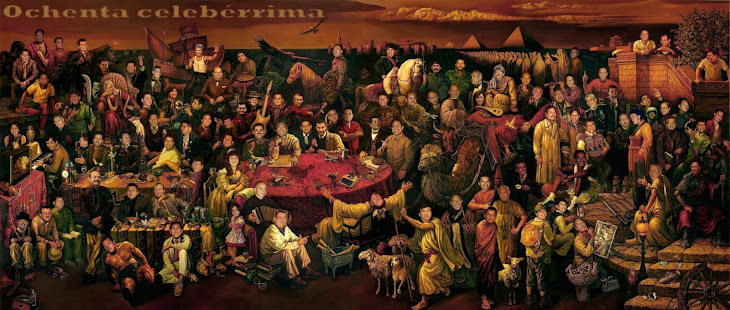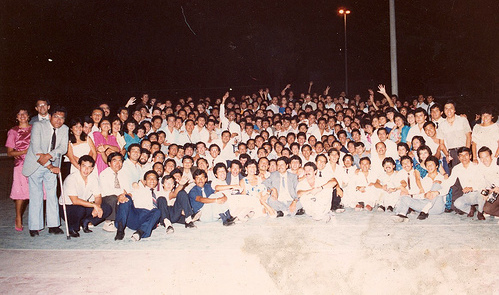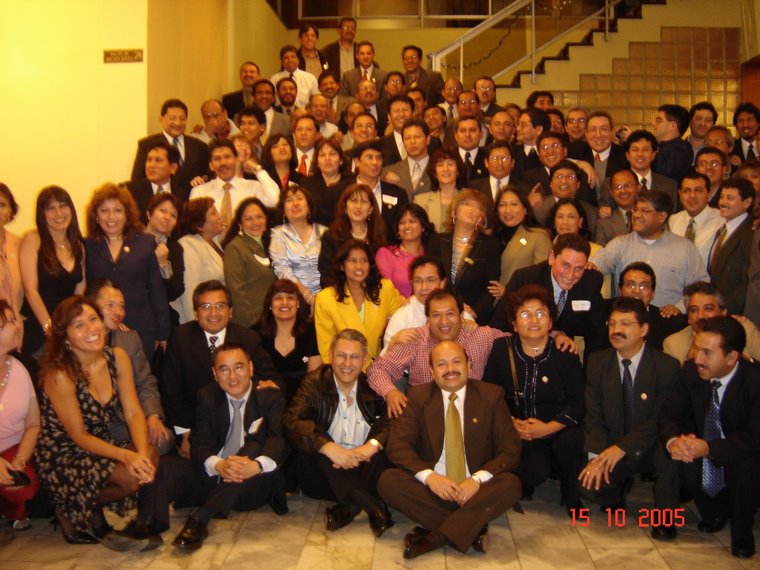Por agricultura urbana se entiende la producción de alimentos dentro de los confines de las ciudades: en los patios, terrazas, huertos comunitarios y huertas de frutales, así como en espacios públicos o no aprovechados. Incluye operaciones comerciales que producen alimentos en invernaderos y en espacios al aire libre, pero en la mayoría de los casos se trata de una actividad en pequeña escala y dispersa por toda la cuidad (FAO, 1996).
Existen otras definiciones que no difieren mucho de esta, en cualquiera de ellas, el elemento más común y más complejo de enunciar es el límite del área urbana y periurbana a considerar dentro de la agricultura urbana.
En este contexto nacional e internacional es que comienza a crecer, de forma acelerada la agricultura urbana. Era necesario sustituir las importaciones de alimentos que venían del campo socialista y los productos que se obtenían de la industria nacional en fuerte crisis durante estos años. La respuesta inmediata fue la parcelación de la tierra, primero en forma espontánea, por parte de la población de la ciudad de La Habana y después, a partir de 1994 de forma organizada y centralizada por el estado como una de las alternativas para incrementar la disponibilidad de alimentos en el país. Para el año 2008 se dictan nuevas leyes donde se autoriza la entrega de tierras estatales ociosas en concepto de usufructo a personas naturales o jurídicas, las que serán utilizadas en forma racional y sostenible de conformidad con la aptitud de uso del suelo para la producción agropecuaria, tanto para la agricultura urbana como para la agricultura rural.
La agricultura urbana fue una modalidad para producir alimentos que, se fomentó para resolver los problemas y déficit alimentario, creados por el impacto de la caída del campo socialista en Cuba.
Durante el llamado "Periodo Especial" en los 90.
Nadie duda ya que la Agricultura Urbana llegó para quedarse. Patios antes desaprovechados, pequeñas parcelas, azoteas y hasta balcones reverdecen con hortalizas y hasta plantas medicinales. Extendido a todo el país, el movimiento de la Agricultura Urbana suma miles de personas, que en organopónicos, huertos intensivos, balcones o patios, cosechan legumbres y condimentos de todo tipo bajo un sistema ecológico. Con unas 30 mil hectáreas, que producen más de tres millones de toneladas de verdura fresca al año para 11 millones de habitantes; ha incrementado las zonas verdes en las ciudades, lo que contribuye a descontaminar el ambiente y proporciona focos de integración social.
ORGANOPONICO VIVERO ALAMAR
http://farmcuba.org/farm.html#farmtop
Cuba used to have an industrialized agricultural system, exporting sugar and citrus to Russia and importing most of its food, as well as oil, machinery, fertilizers and pesticides. Then the Soviet Union collapsed in 1991, which combined with a US trade embargo created a crisis that Fidel Castro named "The Special Period". Suddenly cut off from all these inputs, the country turned to agricultural self-sufficiency, organic production and permaculture almost by default. Urban gardens sprouted around the island's cities, encouraged by the government, and the end result is an incredible example of sustainable agriculture.
One of Havana's largest and most successful urban gardens is the Organopónico Vivero Alamar, a Unidad Básica de Producción Cooperativa (Basic Unit of Cooperative Production). Covering 11 hectares in Alamar, a residential suburb, the allotment's rows of vegetables are overshadowed by grey Soviet-style blocks of flats. Though small, the garden (really more of an urban farm) is incredibly productive. As well as fresh vegetables, fruits, ornamental plants, seedlings, timber and medicinal and spiritual plants, the cooperative also produces dried herbs, condiments, garlic paste, tomato sauce and pickles; vermicompost, compost and substrates; goat and rabbit meat and mycorrhizal fungi. The Organopónico also welcomes tourists and holds workshops and courses in organic agriculture.
Products are sold to local restaurants and directly to community members from the farm shop.
The cooperative that owns the Organopónico has 150 members, with 17 employees. Miguel Angel Salcines López, one of its founders and the current president, says, "The sense of belonging is central to organic production, and in the cooperative form there's even more a sense of belonging. We're less vulnerable economically because we can adapt better to the economic conditions. And we can improve social conditions for members and their families."
He says the cooperative is contributing to local development by facilitating access to healthy food at fair prices and creating jobs, especially for women and older people. They are also providing a beautiful example of how organic agriculture can be practiced in a city. Cuba's shift to self-sustainability, at least in fruits and vegetables, and its wide-scale adoption of urban, organic food growing, offer plenty of lessons in how to cope with potential future oil shortages and how communities, when driven by necessity, will organize and find ways to feed themselves. In the words of environmentalist Bill McKibben, Cuba may be "the world's largest working model of a semi-sustainable agriculture."
One of Havana's largest and most successful urban gardens is the Organopónico Vivero Alamar, a Unidad Básica de Producción Cooperativa (Basic Unit of Cooperative Production). Covering 11 hectares in Alamar, a residential suburb, the allotment's rows of vegetables are overshadowed by grey Soviet-style blocks of flats. Though small, the garden (really more of an urban farm) is incredibly productive. As well as fresh vegetables, fruits, ornamental plants, seedlings, timber and medicinal and spiritual plants, the cooperative also produces dried herbs, condiments, garlic paste, tomato sauce and pickles; vermicompost, compost and substrates; goat and rabbit meat and mycorrhizal fungi. The Organopónico also welcomes tourists and holds workshops and courses in organic agriculture.
Products are sold to local restaurants and directly to community members from the farm shop.
The cooperative that owns the Organopónico has 150 members, with 17 employees. Miguel Angel Salcines López, one of its founders and the current president, says, "The sense of belonging is central to organic production, and in the cooperative form there's even more a sense of belonging. We're less vulnerable economically because we can adapt better to the economic conditions. And we can improve social conditions for members and their families."
He says the cooperative is contributing to local development by facilitating access to healthy food at fair prices and creating jobs, especially for women and older people. They are also providing a beautiful example of how organic agriculture can be practiced in a city. Cuba's shift to self-sustainability, at least in fruits and vegetables, and its wide-scale adoption of urban, organic food growing, offer plenty of lessons in how to cope with potential future oil shortages and how communities, when driven by necessity, will organize and find ways to feed themselves. In the words of environmentalist Bill McKibben, Cuba may be "the world's largest working model of a semi-sustainable agriculture."
http://youtu.be/jRz34Dee7XY
The vegetable gardeners of Havana
BBC Two's Future of Food
Climate change, drought, population growth - they could all threaten future food supplies. But global agriculture, with its dependence on fuel and fertilisers is also highly vulnerable to an oil shortage, as Cuba found out 20 years ago. Around Cuba's capital Havana, it is quite remarkable how often you see a neatly tended plot of land right in the heart of the city. Sometimes smack bang between tower block estates or next door to the crumbling colonial houses, fresh fruit and vegetables are growing in abundance. Some of the plots are small - just a few rows of lettuces and radishes being grown in an old parking space. Other plots are much larger - the size of several football pitches. Usually they have a stall next to them to sell the produce at relatively low prices to local people. Twenty years ago, Cuban agriculture looked very different. Between 1960 and 1989, a national policy of intensive specialised agriculture radically transformed Cuban farming into high-input mono-culture in which tobacco, sugar, and other cash crops were grown on large state farms. Cuba exchanged its abundant produce for cheap, imported subsidised oil from the old Eastern Bloc. In fact, oil was so cheap, Cuba pursued a highly industrialised fuel-thirsty form of agriculture - not so different from the kind of farming we see in much of the West today. But after the collapse of the Soviet Union, the oil supply rapidly dried up, and, almost overnight, Cuba faced a major food crisis. Already affected by a US trade embargo, Cuba by necessity had to go back to basics to survive - rediscovering low-input self-reliant farming.
City allotments
City allotments
With no petrol for tractors, oxen had to plough the land. With no oil-based fertilisers or pesticides, farmers had to turn to natural and organic replacements. Today, about 300,000 oxen work on farms across the country and there are now more than 200 biological control centres which produce a whole host of biological agents in fungi, bacteria and beneficial insects. Havana has almost 200 urban allotments - known as organiponicos - providing four million tonnes of vegetables every year - helping the country to become 90% self-sufficient in fruit and vegetables. Alamo Organiponico is one of the larger co-operatives, employing 170 people, built on a former rubbish tip that produces 240 tonnes of vegetables a year. There is a wide range of crops planted side by side and brightly coloured marigolds at the edges.
"We produce all different kinds of vegetables," says farmer Emilio Andres, who is proud of the fact that his allotment feeds the local community. "We sell to the people, the school, the hospital, also to the restaurant and the hotel. "It's important because it's grown in the city, it's fresh food for the people, it's healthy food, and it provides jobs for the people here too. "We don't spray any chemicals. We only spray biological means like bastilos - a bacteria and fungus to kill the pests. And we use repellent plants like marigolds to keep away the pests. "When I see all of these healthy crops, without too many pests, grown without any chemicals, it's amazing for me - I am making a contribution for the people that get healthy crops, healthy products."
Healthy diet
The organiponico uses raised beds filled with about 50% high-quality organic material (such as manure), 25% composted waste such as rice husks and coffee bean shells, and 25% soil. As well as marigolds, basil and neem trees are planted around the containers to keep the aphids and beetles at bay. Sunflowers and corn are also planted around the beds to attract beneficial insects such as ladybirds and lace wings. Sticky paper or plastic funnel-shaped bottles are positioned throughout the beds to trap harmful pests that do get into the garden.
Healthy diet
The organiponico uses raised beds filled with about 50% high-quality organic material (such as manure), 25% composted waste such as rice husks and coffee bean shells, and 25% soil. As well as marigolds, basil and neem trees are planted around the containers to keep the aphids and beetles at bay. Sunflowers and corn are also planted around the beds to attract beneficial insects such as ladybirds and lace wings. Sticky paper or plastic funnel-shaped bottles are positioned throughout the beds to trap harmful pests that do get into the garden.
And the methods work. Lettuce, tomatoes, peppers, squash, sweet potatoes, spinach, herbs and many other crops are grown in huge quantities and sold cheaply. Mangoes are 2 pence (3 US cents) a pound. Black beans 15p (25 cents) and plantain, just 12p (20 cents). At the time of the oil shock, average calorie consumption in Cuba dropped by a third to dangerously low levels. Since then they have bounced back and Cubans eat just a little less than people in the UK. The biggest difference is that a Western diet includes about three times as much food energy from animal products like meat and dairy. The Cuban diet is much less fatty and requires less fuel to produce. A far less varied diet than in the West, it is also much healthier. The standard lunch for the farm workers is black beans, potatoes and rice. Cuban agricultural researcher, Fernando Funes reckons the rest of the world has something to learn from the Cuban agricultural story. "Well, do you have oil forever? And there also other considerations like global warming, nature conservation... the conventional way of farming generates a lot of damage to the environment and to human health. "Developed countries as well as developing countries should pay a lot of attention to this kind of agriculture which takes care of land, people, environment and is also efficient and productive. You can combine both."













No hay comentarios.:
Publicar un comentario